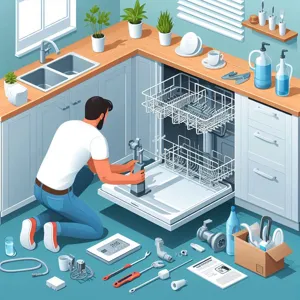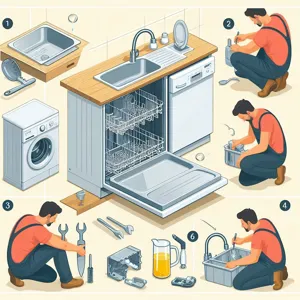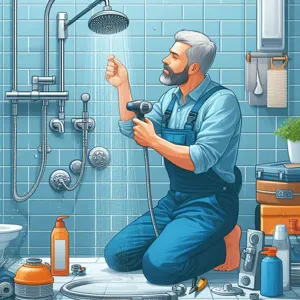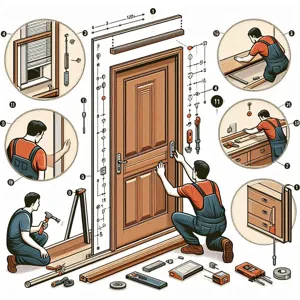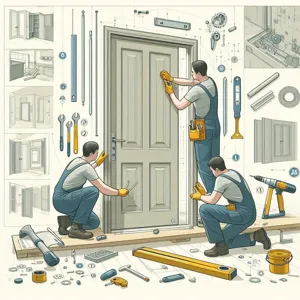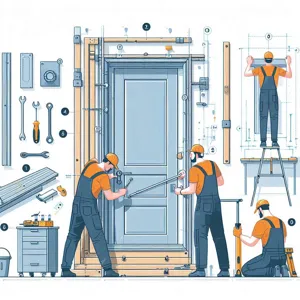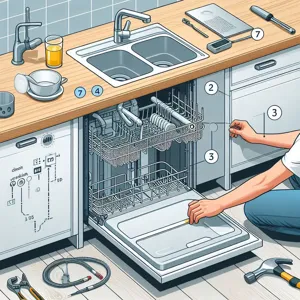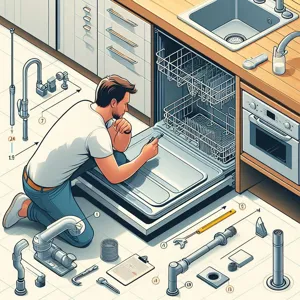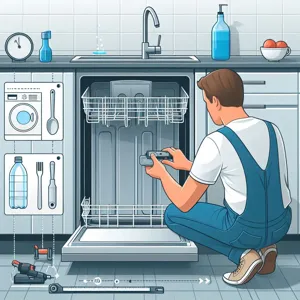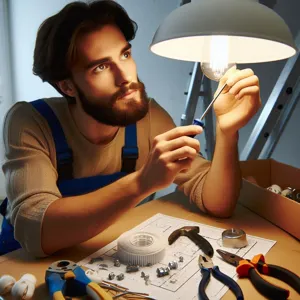Navigating the world of car seats can feel overwhelming for new parents and seasoned caregivers alike.
With a dizzying array of options, safety ratings, and age-specific requirements, finding the perfect car seat for your child is crucial for their protection and your peace of mind. As the cornerstone of safe travel, a car seat not only ensures your little one is secure during every journey but also offers you the confidence to explore the world together. In this ultimate guide, we’ll break down the essentials of car seat selection, from understanding different types and safety features to installation tips and ongoing maintenance. Whether you’re preparing for a newborn, transitioning to a toddler seat, or getting ready for booster seats, this comprehensive resource will equip you with the knowledge you need to make an informed decision that prioritizes your child’s safety and comfort on the road.
1. Understanding the Importance of Car Seat Safety

When it comes to ensuring the safety of your child while traveling, understanding the importance of car seat safety is paramount. Car seats are not just a legal requirement; they are a crucial line of defense in the event of an accident. According to the Centers for Disease Control and Prevention (CDC), car accidents are a leading cause of injury and death for children aged 1 to 14. A properly installed and age-appropriate car seat can reduce the risk of serious injury by up to 71%.
The physics of a car crash is unforgiving, and children are particularly vulnerable due to their smaller size and developing bodies. A car seat is designed to absorb impact and secure your child in place, preventing them from being thrown around or ejected from the vehicle. Different types of car seats—infant seats, convertible seats, and booster seats—are engineered to provide optimal protection for children at various stages of growth.
Furthermore, understanding the nuances of car seat safety involves recognizing the importance of installation and usage. Many parents may not realize that a significant percentage of car seats are not installed correctly, which can significantly compromise their effectiveness. Regularly checking the installation and ensuring that your child is harnessed correctly can make all the difference in an emergency.
Ultimately, prioritizing car seat safety means committing to ongoing education and awareness. As regulations evolve and new safety technologies emerge, staying informed can empower you to make the best choices for your child’s protection. By recognizing the critical role of car seats, you’re taking the first step toward safeguarding your little one every time you hit the road.
2. Types of Car Seats: An Overview
When it comes to car seats, understanding the different types available is crucial for ensuring your child’s safety during every car ride. The vast array of options can be overwhelming, but breaking them down into their categories can simplify the selection process.
**Infant Car Seats:** Designed specifically for newborns and small infants, these seats are typically used rear-facing and provide a snug fit for your little one. They come with a convenient base that remains in your vehicle, allowing you to easily click the seat in and out. Most infant car seats have a weight limit of around 22 to 35 pounds, making them suitable for babies until they outgrow them. The portability of these seats is a huge plus, allowing parents to transition seamlessly from car to stroller.
**Convertible Car Seats:** As your child grows, a convertible car seat can adapt to their needs. These versatile seats can be used both rear-facing for younger children and then converted to forward-facing as they grow, often accommodating children up to 65 pounds or more. Many parents appreciate this type of seat for its longevity, as it can be used for several years, making it a cost-effective option.
**Booster Seats:** Once your child has outgrown their convertible seat, it’s time to consider a booster seat. These seats are designed to elevate your child, allowing the vehicle’s seat belt to fit properly across their lap and shoulder. Booster seats come in two main types: high-back boosters, which provide head and neck support, and backless boosters, which are more portable and lightweight. It’s essential to ensure your child meets the weight and height requirements for transitioning to a booster seat, typically around 40 pounds.
**All-in-One Car Seats:** For ultimate convenience, all-in-one car seats offer the flexibility of being used from infancy through to booster seat age. These seats can switch from rear-facing to forward-facing and finally to a booster, making them a long-term investment for families. While they can be bulkier than other options, their adaptability means you won’t have to purchase multiple seats as your child grows.
Understanding these different types of car seats will empower you to make an informed decision that prioritizes safety and comfort for your child. Always check the manufacturer’s guidelines and your vehicle’s compatibility before making a purchase, ensuring that your chosen car seat fits securely and meets safety standards. With the right car seat, you can enjoy peace of mind knowing that your little one is secure and protected during every journey.
3. Key Factors to Consider When Choosing a Car Seat

When it comes to selecting the perfect car seat for your child, safety and comfort are undeniably paramount. However, the process can be overwhelming with the myriad options available on the market. To make your decision easier, it’s essential to consider several key factors that will help you choose the right car seat tailored to your child’s needs.
**1. Age, Weight, and Height:** The first step in your car seat journey is understanding the specific requirements based on your child’s age, weight, and height. Car seats are generally categorized into three groups: rear-facing seats for infants, forward-facing seats for toddlers, and booster seats for older children. Each type is designed to accommodate varying stages of growth, ensuring maximum safety. Always refer to the manufacturer’s guidelines to select a car seat that fits your child perfectly, as this will ensure that they are securely restrained in the event of an accident.
**2. Safety Features:** In today’s market, car seats come with a plethora of safety features designed to keep your little one secure. Look for models that include a five-point harness system, side-impact protection, and energy-absorbing foam. Additionally, check for certifications such as the Federal Motor Vehicle Safety Standards (FMVSS) compliance, which guarantees that the car seat meets rigorous safety regulations. Advanced features like anti-rebound bars and adjustable headrests can offer added protection and comfort as your child grows.
**3. Ease of Installation:** A car seat is only as safe as it is properly installed. Therefore, choosing a model that boasts user-friendly installation features can make a significant difference. Look for car seats equipped with LATCH (Lower Anchors and Tethers for Children) systems, which simplify the installation process. Some models also provide visual indicators and audible clicks to confirm that the seat is securely installed. If you’re unsure about installation, many retailers offer resources or even in-store assistance to help you find the perfect fit.
**4. Comfort and Convenience:** Your child will likely spend long stretches of time in their car seat, so comfort is crucial. Look for seats with ample padding, breathable fabrics, and adjustable recline positions. Additionally, consider convenience features such as machine-washable covers, removable inserts for newborns, and cup holders for snacks and drinks. These elements can greatly enhance your child’s travel experience, making every car ride a pleasant one.
**5. Longevity and Versatility:** Lastly, consider the longevity of the car seat. Investing in a convertible car seat that transitions from rear-facing to forward-facing, and eventually to a booster seat, can save you money in the long run while accommodating your child’s growth. Additionally, some car seats feature adjustable harnesses and headrests that can be modified as your child matures, thus maximizing the seat’s usability.
By evaluating these key factors—age, safety features, ease of installation, comfort, and versatility—you’ll be well on your way to selecting the perfect car seat for your child. This thoughtful approach not only prioritizes safety but also enhances your family’s travel experience, creating a secure and enjoyable environment for your little one on every journey.
4. Age and Weight Guidelines for Car Seats
Choosing the right car seat for your child is a crucial step in ensuring their safety during every car ride. One of the most important factors to consider is the age and weight guidelines associated with different types of car seats. These guidelines are designed to provide the best protection for your child as they grow, and adhering to them can significantly reduce the risk of injury in the event of an accident.
Infants typically require a rear-facing car seat, which is specifically designed to support their fragile neck and spine. Most experts recommend keeping your baby in a rear-facing seat until they are at least 2 years old or until they reach the maximum height and weight limit set by the car seat manufacturer. This position helps to absorb the force of a collision and protects your child’s head and body more effectively.
As your child transitions from infancy to toddlerhood, you may consider a convertible car seat that can easily switch from rear-facing to forward-facing. Forward-facing seats are suitable for children who are at least 2 years old and weigh between 20 to 65 pounds, depending on the specific model. Always check the manufacturer’s guidelines to ensure you’re using the seat correctly.
Once your child outgrows the forward-facing car seat, typically around age 4 or when they reach the weight and height limits, they can move to a booster seat. Booster seats are designed to elevate your child so that the vehicle’s seat belt fits properly across their lap and shoulder. Children should remain in a booster seat until they are around 4 feet 9 inches tall and are between 8 to 12 years old, as this ensures they are adequately secured by the vehicle’s seat belt system.
It’s essential to regularly review and update your child’s car seat as they grow. Not only does this ensure their safety, but it also allows for comfort during travel. Always refer to your car seat’s manual for specific guidelines and recommendations, and remember that every child develops at their own pace. By staying informed on age and weight guidelines, you can make confident decisions that prioritize your child’s safety on the road.
5. The Difference Between Rear-Facing, Forward-Facing, and Booster Seats

When it comes to selecting the right car seat for your child, understanding the differences between rear-facing, forward-facing, and booster seats is crucial for ensuring safety and comfort during every car ride. Each type of seat serves a specific purpose and is designed to accommodate your child’s growth and developmental stages.
**Rear-Facing Car Seats** are the safest option for infants and toddlers. Designed to cradle your child and support their head, neck, and spine during a collision, these seats should be used for as long as possible, ideally until your child reaches the maximum weight or height limit specified by the manufacturer. Rear-facing seats distribute the force of a crash more evenly across the child’s body, significantly reducing the risk of serious injury. Many parents opt for infant car seats that are portable or convertible seats that can remain in the vehicle.
As your child grows, you’ll transition to a **Forward-Facing Car Seat**. These seats are designed for children who have outgrown their rear-facing seats, typically around age two or older. Forward-facing seats come with a harness system that secures your child in place, providing protection in the event of a collision. It’s essential to keep your child in a forward-facing seat with a harness for as long as possible before considering a booster seat, as this ensures they are safely restrained.
Finally, once your child has outgrown their forward-facing seat, it’s time to consider a **Booster Seat**. Booster seats are designed to elevate your child so that the vehicle’s seat belt fits correctly over their shoulder and lap. The goal is to ensure that the seat belt lies across the strongest parts of your child’s body, thus providing optimal protection. There are two types of booster seats: high-back and backless. High-back boosters are ideal for vehicles without headrests, while backless boosters are suitable for older children who can sit properly without additional support.
Understanding the distinctions between these types of car seats not only aids in compliance with safety regulations but also ensures that your child is as safe as possible during every journey. Keep in mind the recommended guidelines and always refer to the manufacturer’s instructions for the best use of each car seat type.
6. How to Install a Car Seat Properly
Installing a car seat properly is crucial to ensuring your child’s safety during every journey. While it may seem straightforward, the process requires careful attention to detail to guarantee that the seat is securely anchored and positioned correctly. Here’s how to navigate the installation process with confidence:
**1. Read the Manual:** Start by thoroughly reading both the car seat manual and your vehicle’s owner manual. Each car seat model has specific instructions that cater to its design, and different vehicles might have unique features that affect installation. Familiarizing yourself with these details will set the foundation for a secure installation.
**2. Choose the Right Location:** The back seat is the safest place for children under 13. If your vehicle has a center seat with a seatbelt, that is often the safest spot, as it provides the most distance from side-impact collisions. However, if the center seat doesn’t have a proper seatbelt or LATCH (Lower Anchors and Tethers for Children) system, choose one of the side positions that allow for a secure fit.
**3. Secure the Base:** If you’re using an infant car seat with a base, ensure that the base is level by utilizing the built-in indicators. Many bases have adjustable levels to help achieve the correct angle, which is critical for infants. Once the angle is correct, secure the base tightly using either the seatbelt or LATCH system—whichever your vehicle supports. The base should not move more than an inch from side to side or front to back when pulled at the belt path.
**4. Position the Car Seat:** Once the base is secure, attach the car seat itself. Ensure that any harness straps are threaded through the correct slots for your child’s height, and always check the harness for proper tightness. A snug harness should not allow any slack, and you should only be able to fit one finger between the harness and your child’s collarbone.
**5. Double-Check Your Work:** After installation, take a moment to double-check everything. Give the car seat a firm shake at the base—if it moves more than an inch, it needs to be re-evaluated. This is also a good time to ensure that the harness is adjusted correctly for your child’s comfort and safety.
**6. practice Periodic Checks:** Over time, car seats can come loose due to regular use, so it’s wise to inspect the installation periodically. Additionally, as your child grows, you may need to adjust the straps or even transition to a different car seat altogether. Keeping these checks in mind can help ensure that your child remains protected.
By following these steps and staying informed about the latest safety guidelines, you can ensure that your child is safely secured in their car seat, allowing you to drive with peace of mind. Remember, the right installation is just as important as choosing the right seat, so never rush through this vital process.
7. Features to Look for in a Car Seat

When it comes to selecting the perfect car seat for your child, understanding the essential features can make all the difference in ensuring both safety and comfort. Here are some key attributes to look for that will help you make an informed decision:
**1. Safety Ratings**: Always check for safety ratings provided by reputable organizations, such as the National Highway Traffic Safety Administration (NHTSA) or the Insurance Institute for Highway Safety (IIHS). These ratings give you a clear indication of how well a car seat performs in crash tests.
**2. Five-Point Harness System**: A five-point harness system is crucial for younger children. This feature secures your child at the shoulders, hips, and between the legs, providing maximum protection during a collision. Look for seats that offer easy adjustments for this harness as your child grows.
**3. Ease of Installation**: A car seat that is easy to install correctly is vital for safety. Look for models with clear instructions, color-coded installation paths, and features like LATCH (Lower Anchors and Tethers for Children) systems or built-in seat belt guides. Some seats also come with a level indicator to help you achieve the proper angle.
**4. Comfort Features**: Your child will likely spend considerable time in their car seat, so comfort is essential. Look for cushioned padding, breathable materials, and adjustable headrests. Some car seats even offer reclining features for better comfort during naps.
**5. Age and Weight Range**: Car seats are designed for specific age and weight ranges, so it’s crucial to choose one that accommodates your child’s current size and will grow with them. Convertible seats that transition from rear-facing to forward-facing and even booster seats can save you money in the long run.
**6. Removable and Washable Covers**: Kids can be messy, and spills are inevitable. Choose a car seat with removable, machine-washable covers to make cleaning easy and maintain a hygienic environment for your child.
**7. Extra Safety Features**: Look for additional safety features such as side-impact protection, anti-rebound bars for rear-facing seats, and energy-absorbing foam. These elements can provide an extra layer of protection in the event of an accident.
By focusing on these key features, you can confidently select a car seat that prioritizes your child’s safety and comfort during every journey. Remember, a well-researched choice not only protects your little one but also offers peace of mind for you as a parent.
8. The Role of Car Seat Ratings and Reviews
When it comes to selecting the ideal car seat for your child, understanding car seat ratings and reviews can significantly influence your decision-making process. These ratings, often issued by reputable organizations such as the National Highway Traffic Safety Administration (NHTSA) or independent consumer advocacy groups, provide crucial insights into the safety and performance of various car seats on the market.
Car seat ratings typically assess factors such as crash test results, ease of installation, and user-friendly features. A five-star rating from the NHTSA indicates that a car seat has performed exceptionally well in safety evaluations, giving parents confidence in their choice. But don’t stop at the numbers; delve deeper into customer reviews to gain a better understanding of real-world experiences.
Parents who have already navigated the complexities of car seat selection often share valuable insights about installation ease, comfort for their child, and the seat’s compatibility with different vehicles. You may discover, for example, that a particular model is lauded for its straightforward installation process, or conversely, that another may be cumbersome to secure properly.
Additionally, reviews can shed light on the longevity of a car seat, providing feedback on how well it holds up over time and whether it remains comfortable and safe as your child grows. Look for details about the quality of the materials, the adjustability of the harness, and how easily the seat can be cleaned, as these elements can significantly affect your overall satisfaction.
Incorporating car seat ratings and customer reviews into your research will empower you to make an informed choice that prioritizes your child’s safety while also meeting your family’s needs. By taking the time to explore these resources, you can ensure that the car seat you ultimately choose will not only keep your little one secure but also provide peace of mind for you as a parent.
9. Common Mistakes Parents Make with Car Seats
Choosing the right car seat for your child is a crucial decision that can significantly impact their safety on the road. However, even well-meaning parents can fall into traps that undermine their efforts to protect their little ones. Here are some common mistakes parents make with car seats, along with tips to help you navigate this essential aspect of child safety.
**1. Skipping the Manual:** One of the most frequent oversights is neglecting to thoroughly read the car seat manual. Each seat comes with specific installation instructions that vary based on its design and features. Familiarizing yourself with these guidelines ensures you secure the seat correctly and understand the weight and height limits for your child.
**2. Incorrect Installation:** A car seat that isn’t installed properly is a car seat that may not provide the necessary protection in the event of an accident. Many parents assume they can install the seat without additional guidance, but it’s important to use methods such as the LATCH system or seatbelt installation techniques as indicated in the manual. Consider getting a certified technician to check your installation for added peace of mind.
**3. Not Harnessing Properly:** Many parents are unaware that a child can be too loose in their harness, compromising their safety. The straps should be snug against your child’s shoulders, with no more than one finger able to fit between the harness and the child. Additionally, as your child grows, it’s essential to adjust the harness height and ensure it remains secured at all times.
**4. Outgrowing Their Seat Too Soon:** It’s easy to assume that once your child reaches the maximum weight limit of their car seat, they are ready for a booster seat. However, parents sometimes overlook height restrictions or the need for a transitional seat. Be sure to adhere to both height and weight limits specified for your car seat model to ensure optimal safety.
**5. Ignoring Expiration Dates:** Car seats come with expiration dates, typically ranging from six to ten years from the date of manufacture. Using an expired car seat can be dangerous, as materials can weaken over time, reducing their effectiveness during a collision. Always check the expiration date to ensure your child’s safety.
**6. Failing to Adjust the Seat for Growing Kids:** As your child grows, their needs will change. Parents often forget to adjust the seat’s recline angle or harness system accordingly. Regularly reassessing your child’s fit in their car seat will help you recognize when it’s time for updates or transitions to different types of seats.
By avoiding these common mistakes, you can ensure that your child is as safe as possible while traveling in a vehicle. Remember, staying informed and vigilant is key to making the best choices for your child’s car seat needs. Prioritizing their safety will not only provide peace of mind but also protect them on every journey.
10. Car Seat Maintenance and Care Tips
When it comes to ensuring your child’s safety on the road, proper car seat maintenance and care are just as crucial as choosing the right model in the first place. A well-maintained car seat not only lasts longer but also provides optimal protection for your little one. Here are some essential tips to keep your car seat in top-notch condition.
**Regular Inspections**: Start by routinely inspecting the car seat for any signs of wear and tear. Check for frayed straps, cracked plastic, or any missing components. If you notice anything concerning, consult the manufacturer’s guidelines for repair or replacement options.
**Cleaning**: Children can be messy, and car seats often bear the brunt of spills, crumbs, and sticky fingers. Most car seats come with removable covers that can be machine washed. Make sure to follow the manufacturer’s instructions for cleaning to avoid damaging the fabric or padding. For the plastic parts, a damp cloth with mild soap is usually sufficient to wipe away dirt and grime.
**Storage**: If you need to store the car seat for an extended period, keep it in a cool, dry place away from direct sunlight. Prolonged exposure to heat or UV rays can degrade the materials and affect the seat’s safety performance.
**Expiration Dates**: Just like food, car seats have expiration dates, typically ranging from six to ten years from the date of manufacture. Check the label on your car seat for its expiration date and be sure to replace it when that time comes. Using an expired car seat can pose serious safety risks in the event of an accident.
**Installation Checks**: Each time you install the car seat, whether moving it to another vehicle or adjusting its position, double-check that it is securely installed according to the manufacturer’s directions. A snug fit is vital for effective protection during a crash.
**Safety Recalls**: stay informed about any safety recalls that may affect your car seat. Check the National Highway Traffic Safety Administration (NHTSA) website or the manufacturer’s website regularly to ensure your seat is safe and up to date.
By following these maintenance and care tips, you can help extend the life of your child’s car seat while ensuring it remains a reliable protector for your little one on every journey. A well-cared-for car seat is a critical step in safeguarding your child’s safety, providing peace of mind for every trip you take together.
11. When to Transition Your Child to a New Car Seat
Transitioning your child to a new car seat is a significant milestone that comes with its own set of guidelines and considerations. It’s essential to pay close attention to your child’s growth and development as well as the specific recommendations provided by car seat manufacturers, as these can vary widely.
Most experts agree that children should remain in a rear-facing car seat for as long as possible, ideally until they reach the maximum weight or height limit set by the car seat manufacturer, which can be up to 40 pounds or more. This position is crucial as it provides the best protection for a child’s head, neck, and spine in the event of a collision. Once your little one outgrows their rear-facing seat, it’s time to transition to a forward-facing car seat, which should be equipped with a harness system for added safety.
Keep a close eye on your child’s age and size. Generally, children can switch to a forward-facing car seat between the ages of 2 and 4, but it’s best to follow the weight and height guidelines provided by your car seat’s manufacturer. After they’ve outgrown the forward-facing seat, you may consider moving them to a booster seat, typically when they reach around 4 years old and weigh at least 40 pounds.
It’s also crucial to assess your child’s maturity level when making these transitions. Ensure they can sit still and properly use the seat belt before transitioning to a booster seat. Remember, the goal is to keep your child safe and secure for as long as possible, so err on the side of caution and follow the guidelines to make informed decisions. Transitioning car seats may seem intimidating at first, but it’s all about ensuring your child’s safety while adapting to their growing needs.
12. Traveling with Car Seats: Tips for Air and Road Travel
Traveling with car seats can feel like a daunting task, but with the right preparation and knowledge, it can be a smooth process whether you’re hitting the road or taking to the skies. Here are some practical tips to ensure your child’s safety and comfort during your journeys.
### Air Travel Tips
When flying, the first consideration is understanding your airline’s policy regarding car seats. Most airlines allow you to bring a car seat for use on the plane, but you’ll want to confirm that your specific seat is approved for air travel. Look for labels indicating it meets Federal Aviation Administration (FAA) standards.
**Packing Smart:** When packing your car seat, consider using a protective travel bag. This not only keeps the seat safe from damage but often allows you to check it in without an additional fee. Some parents also opt for car seat carts, which make transporting the seat through the airport much easier.
**At the Airport:** Arrive early to give yourself ample time to navigate security. Car seats can complicate the process, so be patient and prepared to remove it for inspection. Once on board, ensure the seat is installed correctly according to the airline’s guidelines, and always keep your child buckled in during takeoff and landing.
### Road Travel Tips
For road trips, the focus shifts to ensuring both safety and comfort for your child. Before you hit the road, double-check that the car seat is properly installed in your vehicle following the manufacturer’s instructions. If you’re unsure, many local fire departments and hospitals offer free car seat checks.
**Comfort Essentials:** Long drives can be tough on little ones, so pack comfort items such as favorite blankets or toys. Regular stops every couple of hours for bathroom breaks and stretching can make a big difference in keeping your child happy and engaged during the journey.
**Safety Checks:** Always ensure that your child is securely strapped in, and periodically check to see that the straps are snug, especially if the child is wearing bulky clothing. If you’re traveling during hot weather, consider using sunshades for the windows to keep the car cooler and shield your child from direct sunlight.
By planning ahead and considering these tips, traveling with car seats can transform from a source of stress into an opportunity for memorable family adventures. Safety is paramount, but with a little foresight, you can ensure that your journeys are enjoyable for everyone involved.
13. Budgeting for a Car Seat: What to Expect
When it comes to budgeting for a car seat, it’s essential to understand that prices can vary significantly based on features, safety ratings, and brand reputation. On the lower end, you might find basic infant car seats starting around $50, which typically offer minimal features but can still meet essential safety standards. However, as you climb the price ladder, you’ll discover a wealth of options packed with advanced safety technology, added convenience features, and even stylish designs.
Mid-range car seats, generally priced between $100 and $300, often include features like extended rear-facing capabilities, easier installation systems, and superior comfort for your little one. These seats are designed to grow with your child, offering convertible options that transition from rear-facing to forward-facing, and even to booster seats as your child ages. Investing in a mid-range seat often strikes the perfect balance between safety and budget.
For parents willing to splurge, high-end car seats can range from $300 to $600 or more. These models frequently feature top-of-the-line safety technology, luxury fabrics, and customizable options. Brands in this category often invest heavily in research and development, ensuring that their seats meet or exceed the latest safety standards. Additionally, premium car seats typically offer excellent durability, meaning they can last through multiple children or be resold with ease.
Beyond the initial purchase price, it’s wise to consider potential ongoing costs. Some car seats require additional accessories or bases for installation in multiple vehicles, which can add to your budget. Furthermore, if you’re looking for a seat with a longer lifespan, be sure to consider the warranty and whether the seat can accommodate growing children, as this can save you money in the long run.
In summary, budgeting for a car seat is about finding the right balance between safety, functionality, and your financial limits. Assess your specific needs, research various options, and don’t forget to account for any additional costs that may arise. By doing so, you’ll be well on your way to selecting a car seat that not only fits your budget but also provides peace of mind as you transport your most precious cargo.
14. Recommended Car Seat Brands and Models
When it comes to selecting the right car seat for your child, the brand and model can make all the difference in ensuring safety, comfort, and ease of use. With so many options on the market, it can be overwhelming to figure out which one is best for your family. That’s why we’ve compiled a list of some of the most reputable car seat brands, along with specific models that have garnered positive reviews from parents and safety experts alike.
**1. Graco**
Graco is a household name in the world of car seats, known for its reliability and value. The Graco 4Ever DLX is a standout model that serves as a 4-in-1 car seat, transitioning from rear-facing to forward-facing, and finally to a booster seat. Its longevity, ease of installation, and user-friendly features make it a favorite among parents.
**2. Britax**
Britax is synonymous with safety, and their car seats often feature advanced safety technology. The Britax Boulevard ClickTight is a model worth considering, as it combines a high level of side impact protection with a simple installation system that makes securing the seat a breeze. Its plush padding and premium materials ensure your child’s comfort on every ride.
**3. Chicco**
Chicco is praised for its innovative designs and safety ratings. The Chicco KeyFit 30 is a top-rated infant car seat that offers a snug fit for newborns and is known for its easy installation and lightweight design. It’s perfect for parents on the go, making transitions between car and stroller effortless.
**4. Evenflo**
Evenflo provides budget-friendly options without compromising on safety. The Evenflo Symphony DLX All-In-One car seat is highly versatile, accommodating your child through all growth stages. Its unique SureSafe installation system takes the guesswork out of securing the seat, making it an appealing choice for busy parents.
**5. Nuna**
For those looking for a premium option, Nuna is a brand that stands out for its stylish aesthetics and safety features. The Nuna RAVA is an excellent convertible car seat that features a sleek design, high-quality fabrics, and an easy-to-use harness system. Its extended rear-facing capability makes it a favorite for safety-conscious families.
**6. Maxi-Cosi**
Maxi-Cosi has a strong reputation for comfort. The Maxi-Cosi Mico Max 30 is a lightweight infant car seat that offers exceptional padding and side impact protection. Its easy installation and compatibility with several strollers make it a convenient choice for parents who prioritize mobility.
When choosing a car seat, it’s important to consider factors such as your child’s age, weight, and developmental stage, as well as your vehicle’s compatibility. Always consult safety ratings and user reviews to ensure you’re making an informed decision. By investing in a trusted brand and model, you can rest assured that your child will be safe and secure on every journey.
15. Resources and Support for Parents on Car Seat Safety
Navigating the world of car seat safety can feel overwhelming for many parents, but thankfully, a wealth of resources and support is available to empower you in making informed decisions. Understanding the intricacies of car seat installation, maintenance, and usage is crucial for ensuring your child’s safety on the road, and numerous organizations are dedicated to assisting parents every step of the way.
One of the most reliable resources is the National Highway Traffic Safety Administration (NHTSA), which provides comprehensive guidelines on selecting the right car seat, installation tips, and safety checks. Their website features a user-friendly tool that helps you determine the appropriate seat for your child’s age, weight, and height, making it easier to find a suitable option.
Local hospitals and fire departments often host car seat inspection events, where certified technicians can provide hands-on assistance with installation and answer any questions you may have. These free services not only help ensure that your car seat is correctly installed but also offer peace of mind knowing that you are prioritizing your child’s safety.
Online communities and parenting forums can also be a treasure trove of information. Websites like BabyCenter and What to Expect host discussions where parents share their experiences, recommendations, and tips on car seat safety. Additionally, social media platforms feature dedicated groups focused on car seat safety, where you can engage with other parents and experts who can offer guidance and support.
Finally, consider reaching out to local child passenger safety advocates or organizations. Many communities have trained professionals who can conduct personalized safety checks and provide educational resources tailored to your specific needs.
By utilizing these resources, you can confidently navigate the complexities of car seat safety. Remember, staying informed and seeking support is key to ensuring your child’s safety during every journey, big or small. With the right tools and knowledge at your disposal, you can choose the perfect car seat for your child and keep them safe on the road.
In conclusion, selecting the right car seat for your child is a crucial decision that ensures their safety and comfort during every journey. We’ve explored essential factors such as age, weight, and safety features that will empower you to make an informed choice. Remember, investing time in researching and understanding the various options available can lead to peace of mind as you hit the road with your little one. As you navigate this important milestone, trust your instincts and prioritize your child’s needs above all. We hope this ultimate guide serves as a valuable resource for you, and we’re excited to hear about the car seat you choose. Safe travels and happy adventures ahead!


